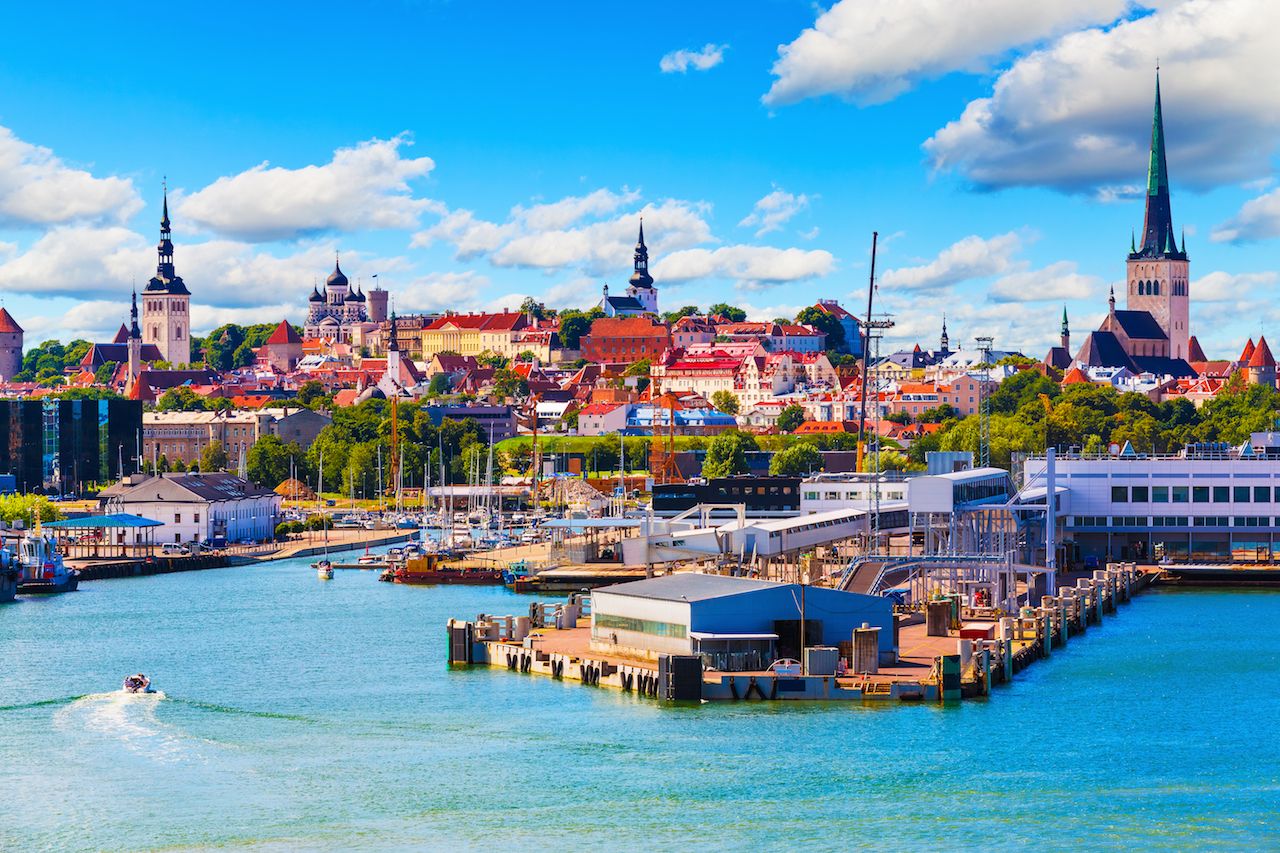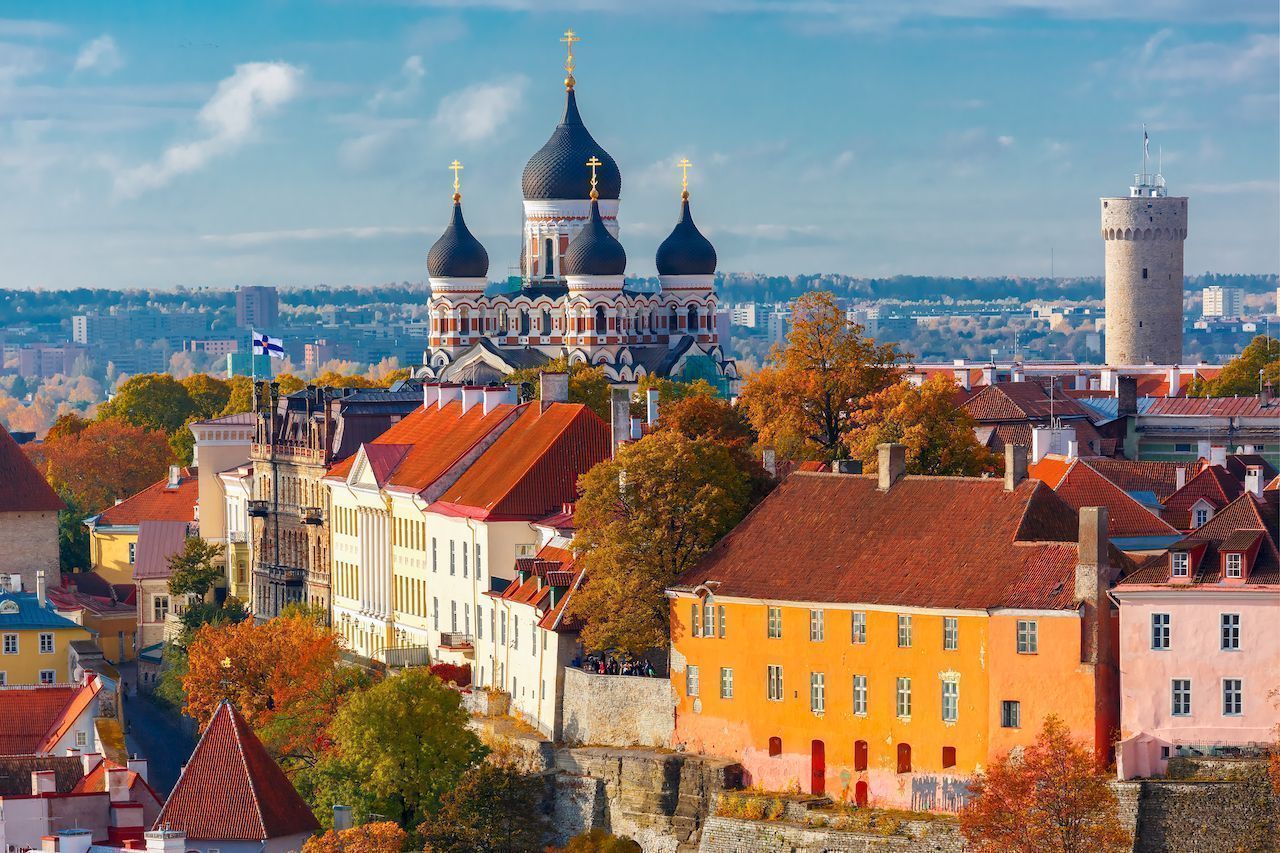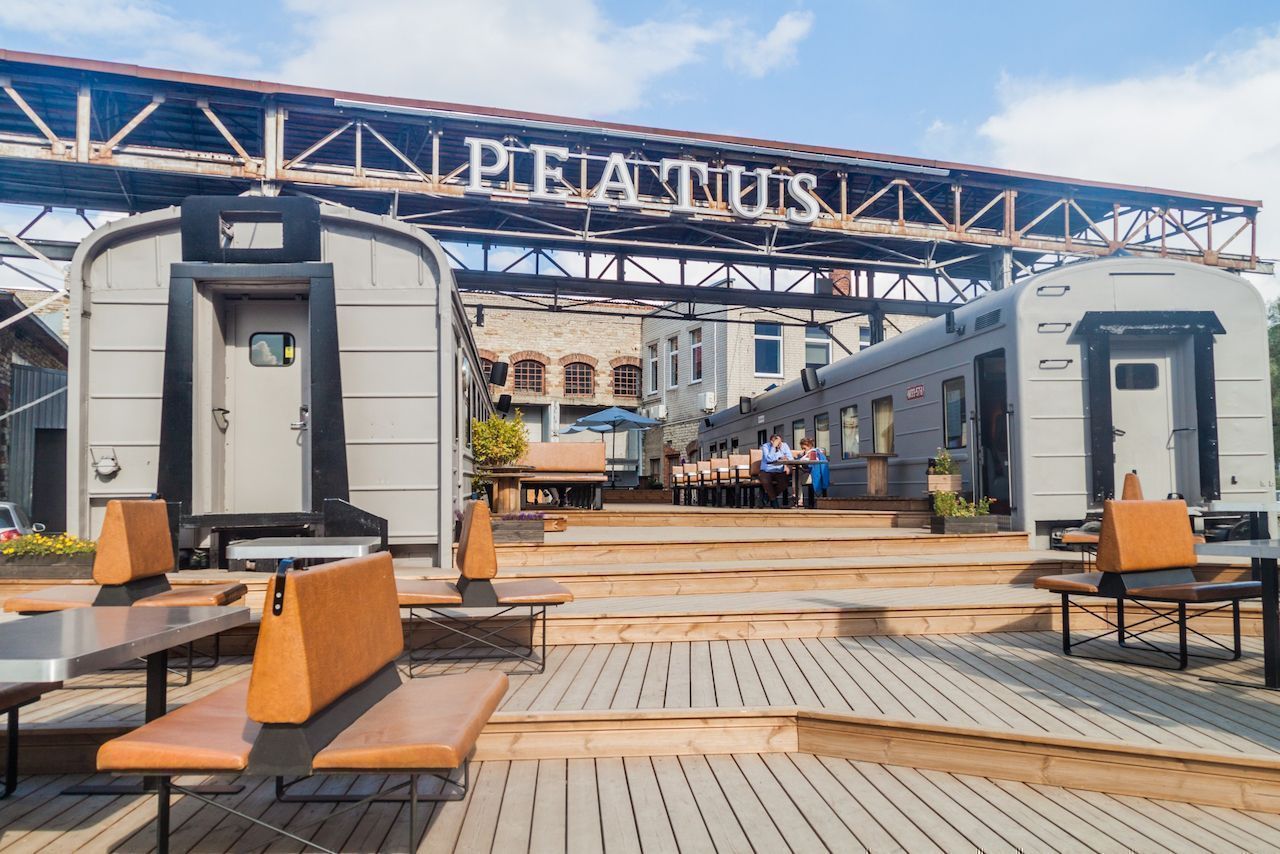Tallinn, the capital and largest city in the northern European country of Estonia, is an innovative and creative hub at the intersection of Northern and Eastern Europe. Here, ancient castles and cobblestone streets marry with repurposed warehouses and sleek, modern urban districts. The city of about 425,000 is a city of contrasts, both the best-preserved medieval city in the region and home to the third-most startups per capita on the continent. The capital’s unique beer culture, entrepreneurial energy, and fun repurposed neighborhoods make it one of the coolest cities in all of Europe. Here’s what to expect.


Tallinn, Estonia, Might Just Be the Coolest City in Europe
Baltic and Scandinavian influences are seen throughout the city.

Photo: Oleksiy Mark/Shutterstock
Estonia’s location on the eastern shore of the Baltic Sea makes it part of the Baltic states along with Latvia and Lithuania. But the roots of its people and language are actually Finnish since the country is just across the Gulf of Finland from Helsinki and the rest of Scandinavia. This means that Tallinn is right at the crossroads of Northern and Eastern Europe, with Gothic architecture seamlessly blending both worlds, home to dense Baltic forests with thousands of Scandinavian islands.
Tallinn’s three redeveloped commercial neighborhoods make an ideal day’s walk.

Photo: kavalenkava/Shutterstock
A weekend, or even a day, in Tallinn should be spent on foot, taking in the distinct character of each of the city’s neighborhoods. Book lodging in the Old Town city center where a room at the Hotel Bern or a similar local boutique runs about $60 per night. From here, access is easy to the trendy new districts that have popped up over the past decade, fueled by the country’s welcoming attitude toward new businesses and residents (it’s quite easy to register a business in Tallinn, even if its business is done online).
Chief among the redeveloped neighborhoods is the refurbished Port Noblessner area. Blue-collar workers used to build and assemble submarines here for the Soviets during the years of occupation. The Maritime Museum showcases the region’s history, but it’s still an active port today. The neighborhood is home to the popular Põhjala Brewery, and surrounding the brewery are a slew of new condo developments and a groovy night club simply called Hall. The gorgeous ShiShi home decor brand’s flagship is also found here, alongside the Michelin-chef-helmed 180°eatery and the Kai Art Center. The neighborhood is easily walkable in less than 15 minutes from the city center, the walk itself an engaging way to take in the city’s Gothic architecture.
In western Tallinn between the port and the heart of town is the creative center, aptly titled the Telliskivi Creative City. Loaded with cool street art, artist studios, and a renovated multi-story central market, this neighborhood has become a hub for the city’s young and expressive. A weekly flea market and hundreds of cultural events happen here each year, from art shows to concerts to spoken word — find out what’s on during your visit via the neighborhood’s official website. After wandering through the market, visit the famous Fotografiska museum of photography and allow enough time for a meal, as the museum has a zero-waste restaurant on site.
Finally, right next to Old Town sits the Rotermann Quarter, which was named in honor of a local Estonian business family. With its slew of renovated factories and industrial buildings, this area is now a bustling commercial center. Restaurant R14, with inventive cuisine and a killer wine list, calls the Rotermann home. Other highlights include the Tallinn Design House, which celebrates the best of local design in clothing, jewelry, traditional handicrafts, and more. The Estonian Museum of Architecture is also situated in the district. This is especially fitting as a number of renovated historical buildings have been recognized internationally for their architectural beauty. Be sure to walk by and photograph the old Town Hall building, St. Olaf’s Church, and the Great Guild Hall.
There’s no shortage of stops for a pint along the way.

Photo: Matyas Rehak/Shutterstock
The Baltic states are renowned for their Porters, originally brewed in the 18th and 19th centuries as a means to combat the often brutal winter seasons this far north. With a long tradition of homebrewing in the area, it only makes sense that Estonia has emerged as a craft beer haven — there are over 80 microbreweries in this nation of just one million inhabitants. Põhjala has led the charge as the Baltic’s largest beer producer, a worthy feat accomplished in just the near-decade since its 2011 opening. Here you’ll find locally inspired brews like the Rye River rye ale and Pilky Pilsner.
Another local favorite is Tanker Brewery, about 12.5 miles outside the capital’s city center and reachable by taxi or Uber. This operation has embraced the Estonian sauna tradition by producing a beer called Sauna Session, specifically to be enjoyed during its namesake activity.
Estonian brewers tend to embrace natural, and often foraged, ingredients. Põhjala has utilized juniper, rye, lingonberries, and blueberries, among other local rations, over the years for its aptly named “Forest Series.” Tanker has welcomed funky local additives like cloudberries, sea buckthorn, and black currant. If you don’t make it all the way out to Tanker, try one of the brews at one of Old Town’s beer bars, including Tuba Bar and Koht or at Pudel in the Telliskivi Creative City.
The city is fueled by a thriving community of entrepreneurs.

Photo: Matyas Rehak/Shutterstock
As previously mentioned, Tallinn is a hotbed of innovation and breeds more startups per capita than most better-known European cities. In fact, Estonia ranks third for most startups, a community that has produced the likes of Skype and attracted banking giant Transferwise. Other celebrated startups from this region include the rideshare company Bolt (formerly Taxify) and robot delivery beast Starship Technologies. Trend data indicated that most startups can be grouped into Location Services, Engineering & Technology, and Electronics & Hardware categories. Estonia’s success can be partially explained by its startup visa and e-residency programs, which allow Estonian residents and even non-residents to form and run a business based here.